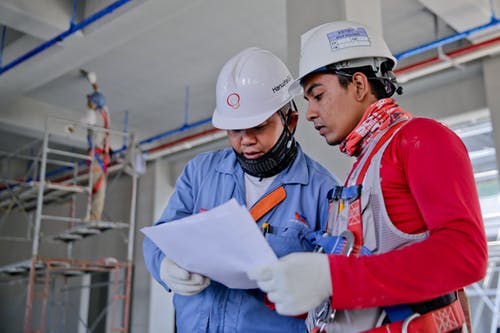
Workers play a strong role in keeping themselves safe due to their willingness to take personal responsibility for decisions that will keep them safe. Safety training and policies are commonly used tools to help encourage risk-free behaviors through building safety knowledge. However, these practices alone will not be enough to create a complete safety culture.
What’s missing from training and rule-making is CARING – that’s right, CARING! If workers feel cared for, respected and appreciated, they are far more likely to be committed to a safe workplace. And, they will pay it forward by caring for other workers and helping them avoid dangers.
There are many subtle signals that leaders and managers send to their employees every day that indicate to workers whether they really care about them. A picture says 1000 words. Have you looked around to see the conditions you provide your employees? If you don’t want to use the breakroom or the restrooms because they are dirty or non-functioning, why do you think your employees would want to do so?
Here are six things that you should put on your to do list this year to help create a more caring environment, thus leading to a safer workplace:
- Clean surfaces with sanitizer or disinfectant regularly - Flu and cold season is here. Keep countertops, tables and work surfaces clean and our employees healthy.
- Spruce up bathrooms and other common areas – A clean coat of paint with an updated color on walls can make a big difference in employees’ moods and satisfaction. Give common areas a makeover so people can relax and feel comfortable while on break.
- Keep it clean – An interesting way to gauge workplace safety culture is by observing the cleanliness of restrooms and break areas. These areas should be clean and well-stocked with supplies. Also, be sure these areas are well lit and presentable.
- Repair or replace broken furniture, appliances, and plumbing – If a chair is broken, it shouldn’t be used. Safety doesn’t just apply to the shop floor and office; workers should be safe in every part of the facility. Worn cords on appliances? A refrigerator that doesn’t stay cold? Plumbing that is leaking? Fix or replace them. Safety is for everyone, everywhere.
- Provide clean handwashing areas that are well-stocked with dryers, soap, and paper towels – Regularly emphasize good handwashing in your safety talks, one-on-one conversations, through signage, and by your own personal example. Not only does good hand hygiene prevent exposure to germs, it also prevents ingestion of hazardous chemicals and dirt that may get on employees’ hands while performing their work.
- Establish a workplace cleanliness policy – You don’t have to do it all. You can distribute responsibilities throughout your workforce. However, as a leader you must make sure you adhere to the policy you establish. Click here for suggestions of what you might want to include in your policy
Your employees and customers will judge a book by its cover when it comes to workplace appearance. Making employees feel appreciated and valued will ultimately result in a safer workplace.
For more information on safety training and policies, contact IMEC or reach out directly to one of our improvement specialists.
Join IMEC on February 24, 2021 for a 2-hour post-COVID-19 safety workshop focused on your pandemic response plan and policies, OSHA regulations, plus best practices for training, cleaning, PPE, and more!
PROTECT YOUR TEAM: Maintaining Workplace Safety through COVID-19 Virtual Workshop
February 24 | 8:30 am - 10:30 am





